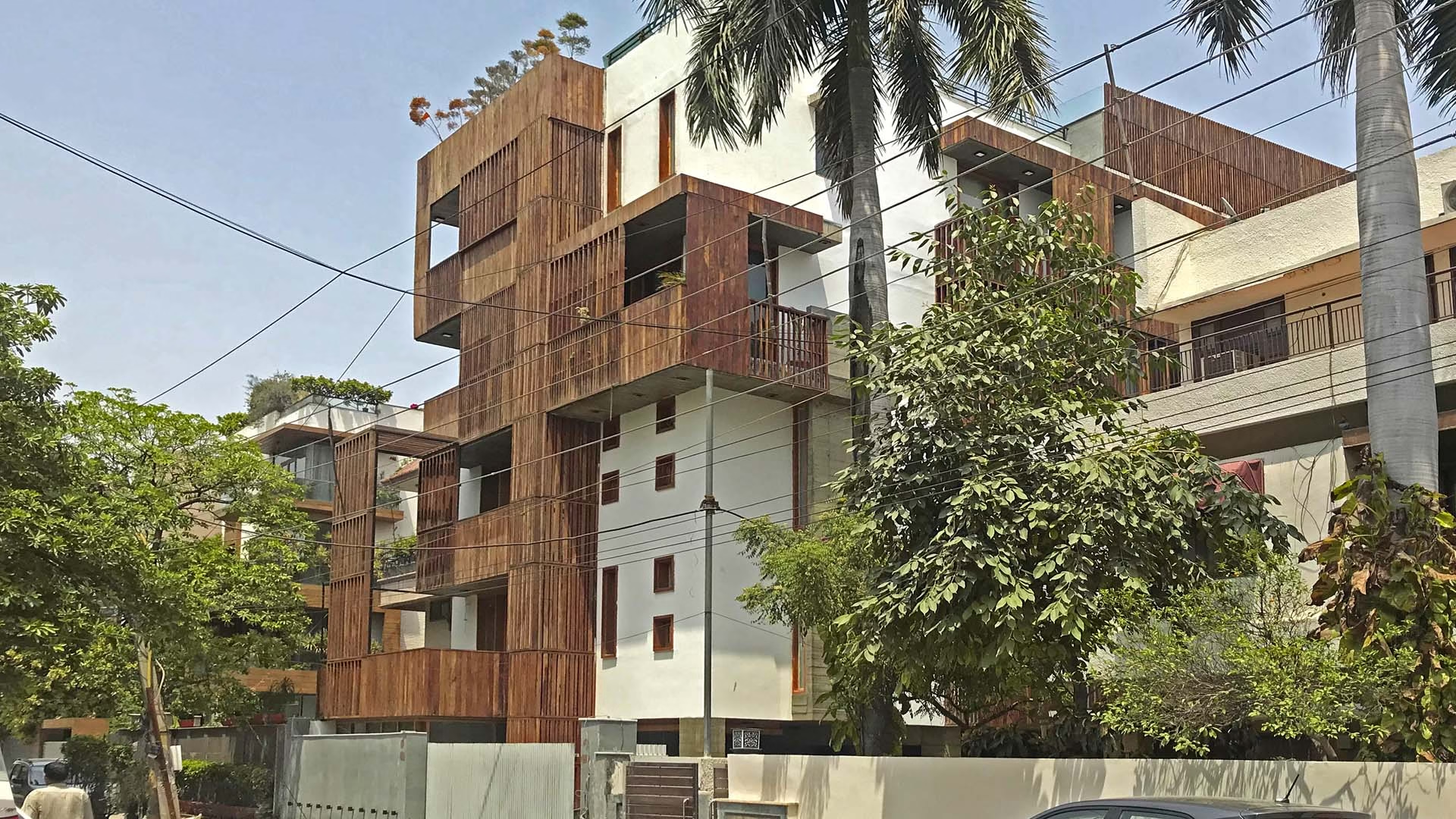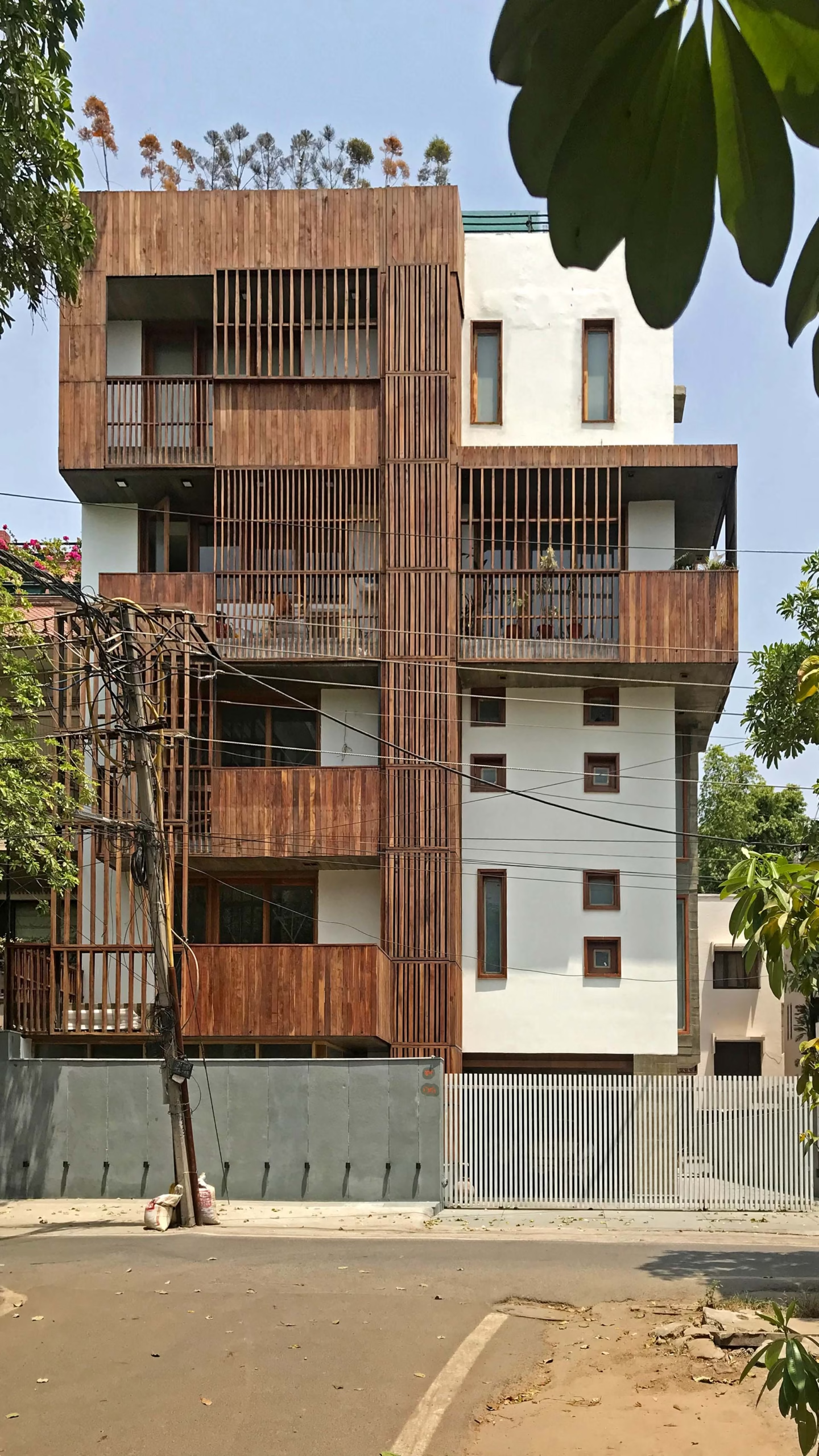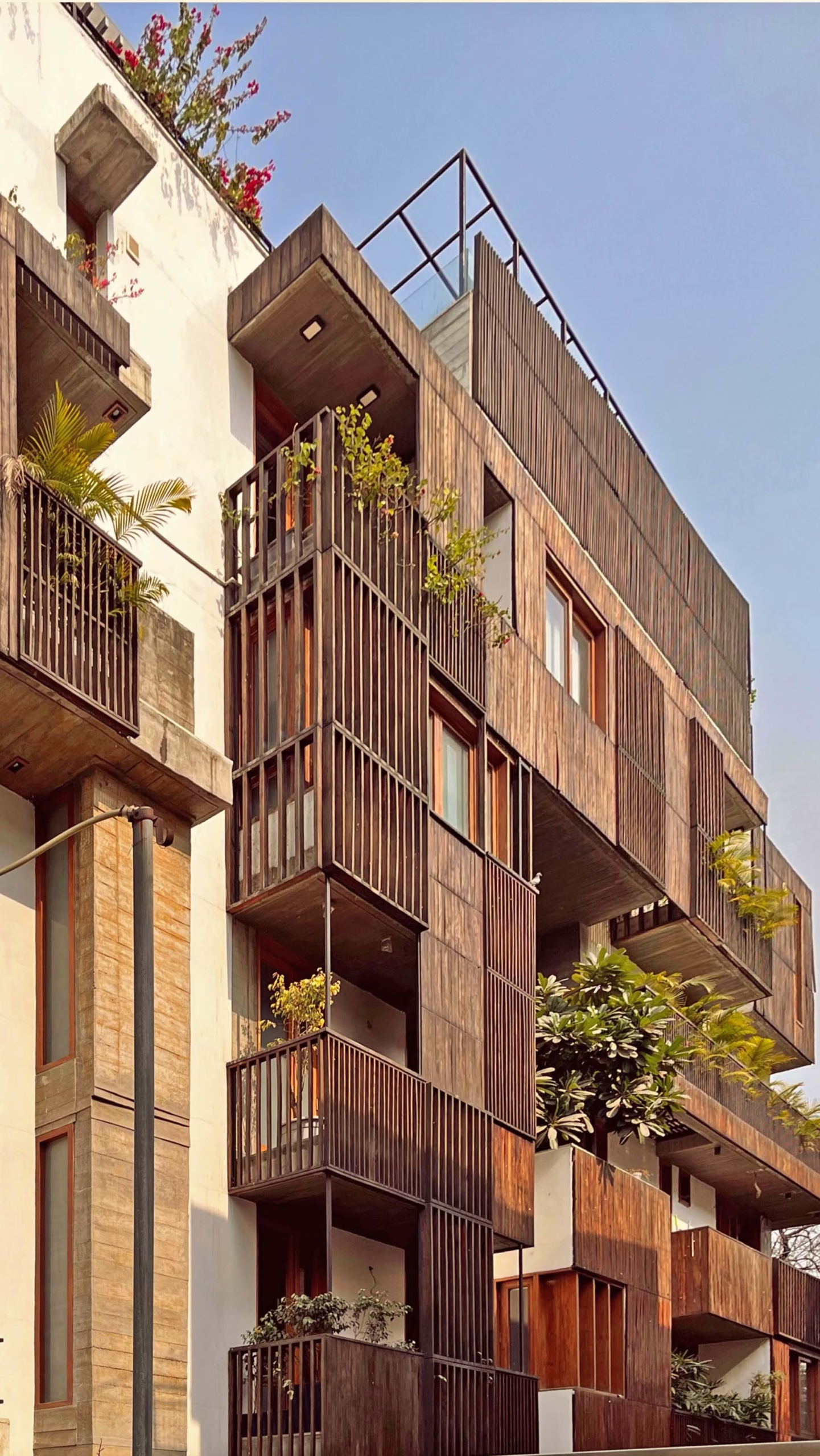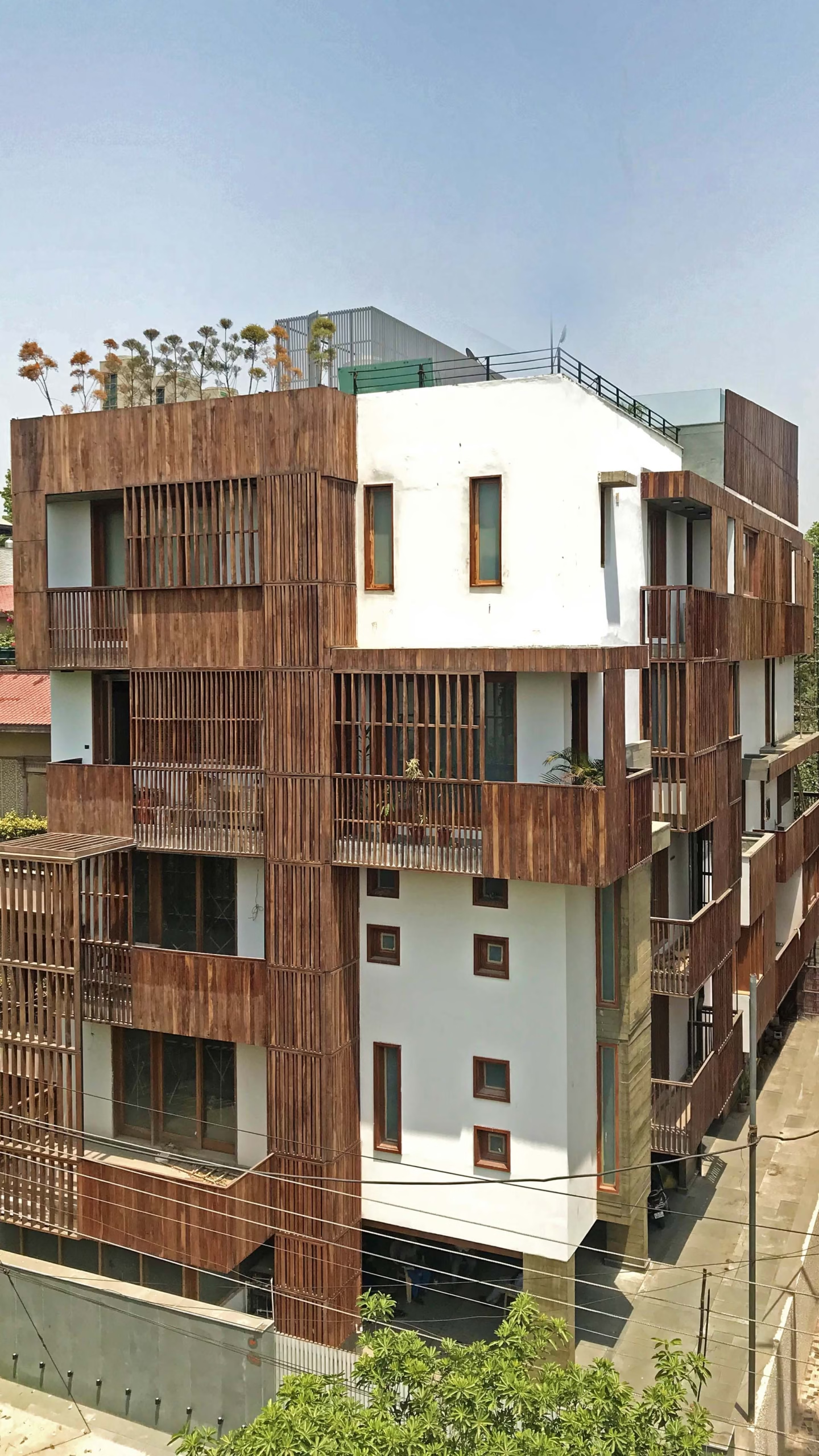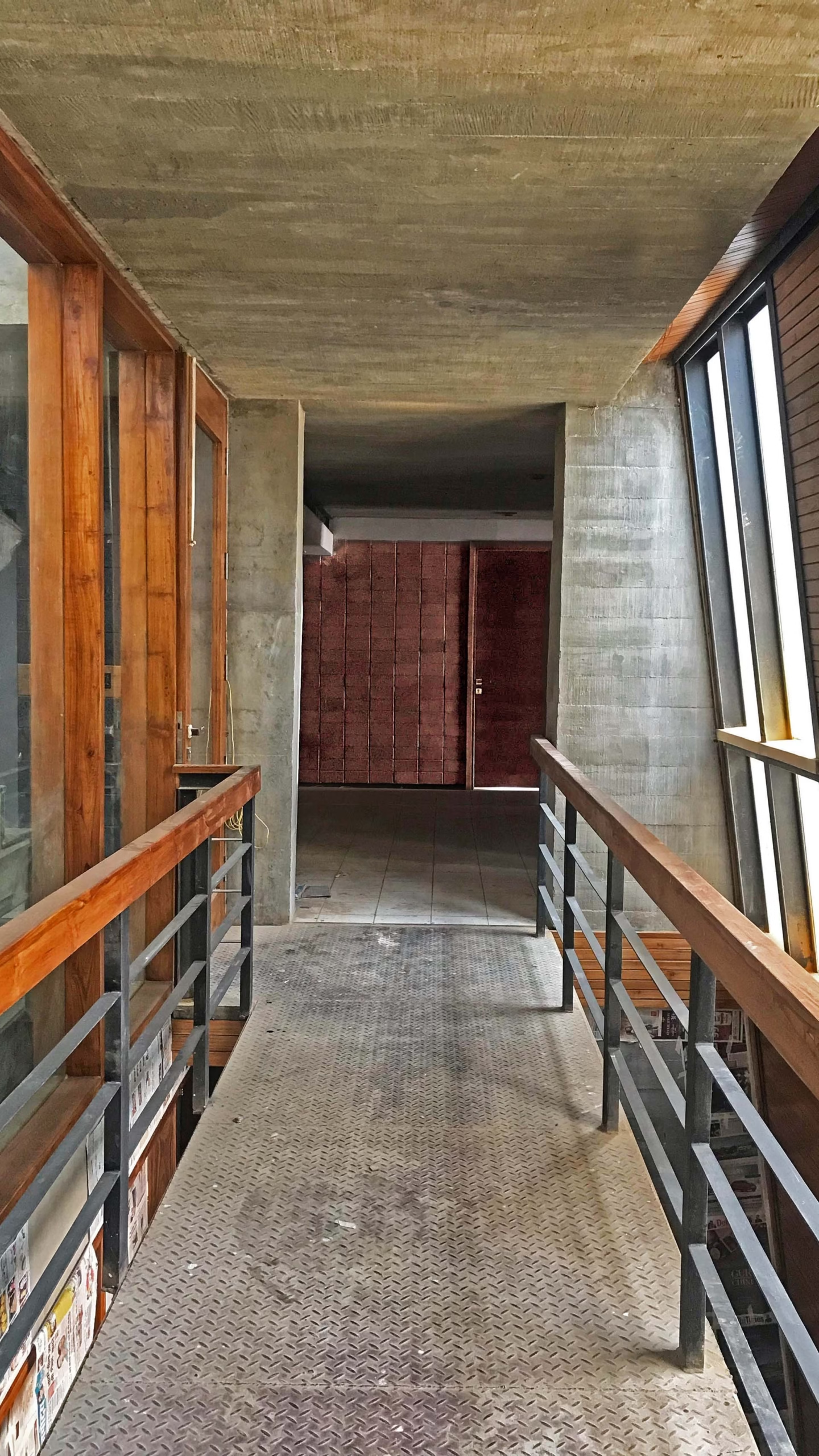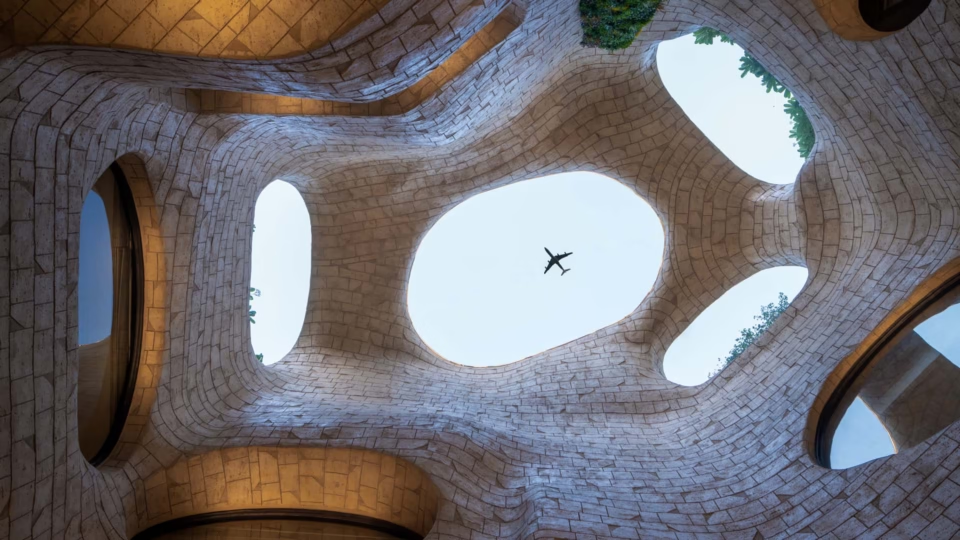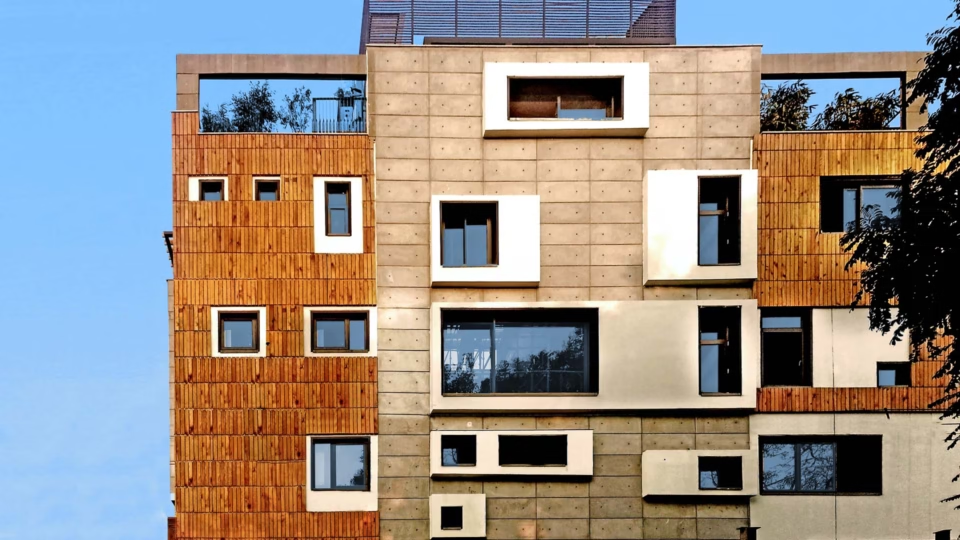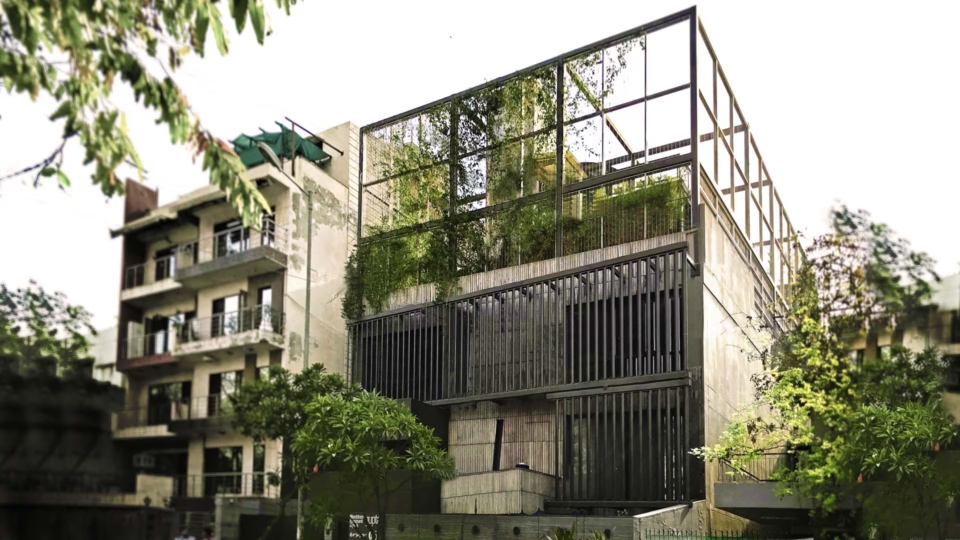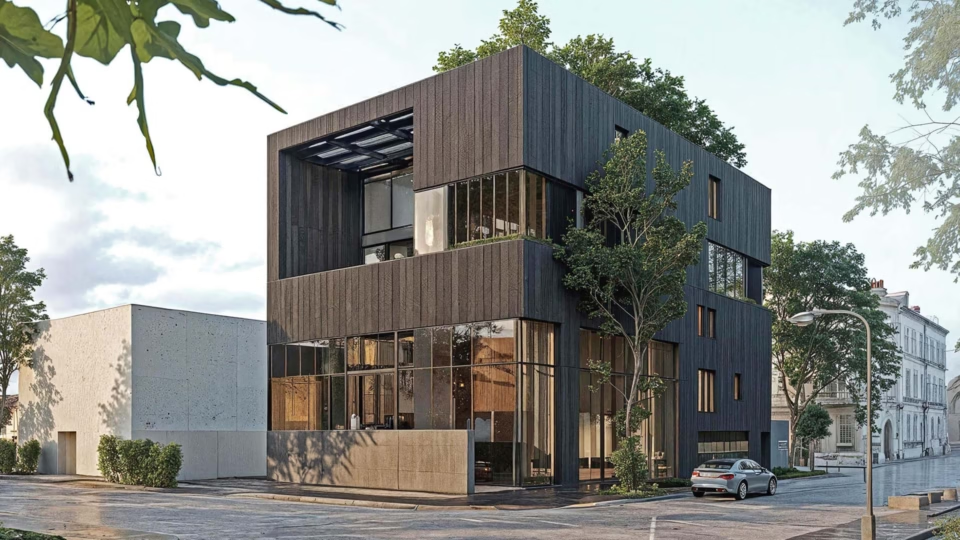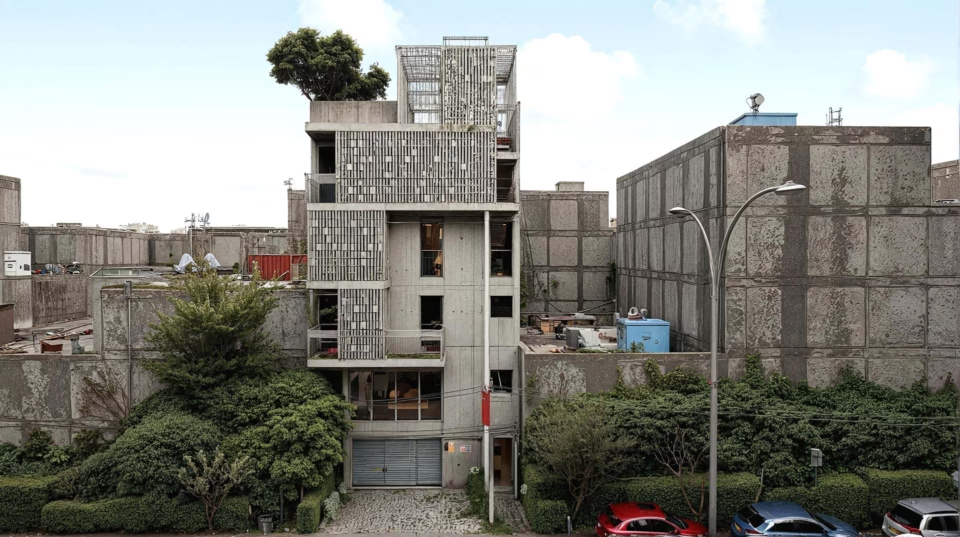Negotiating Family, Law, and Brutalism
The Sharma Residence in New Delhi exemplifies how architecture can transform legal division into spatial harmony. Designed by MOFA Studio, this multi-generational home for two brothers and their extended families addresses one of the city’s most pressing realities—equitable property distribution within a single urban plot. Every square inch is shared and apportioned with precision; Each brother’s household enjoys a duplex: one occupies the ground and first floors while the other resides on the second and third, with a shared rooftop terrace above. The basement is split into dedicated amenities – one side extends the lower home with a dining room opening into a sunken courtyard, whereas the other side houses a private home theatre – illustrating a planning logic that balances communal and individual domains. A common entry and circulation core connect all levels discreetly, allowing interaction without infringing on privacy.
What could have been an exercise in fragmentation evolves here into an architectural choreography of balance. Shared entries dissolve into private domains, circulation is fluid yet respectful, and terraces stitch together views across households. The plan embodies Delhi’s socio-legal fabric, where law and kinship demand coexistence without compromise.
Materiality anchors the house in brutalist honesty. Exposed concrete ceilings and brick walls form its raw structure, but the brick is more than texture—it reflects the family’s own legacy as kiln owners around Delhi. In a striking inversion, humble kikar wood, traditionally considered only fuel, is recast as refined cladding and screen, giving warmth to the rigorous geometry. Deep timber fins, layered façades, and planted terraces soften the severity, creating pockets of intimacy and shade within the dense urban grain.
The Sharma Residence is not just a house but an archetype—an architectural response to the Indian condition of multi-family inheritance. Brutal yet humane, raw yet green, it redefines the urban residence as a vessel of law, family, and memory.

